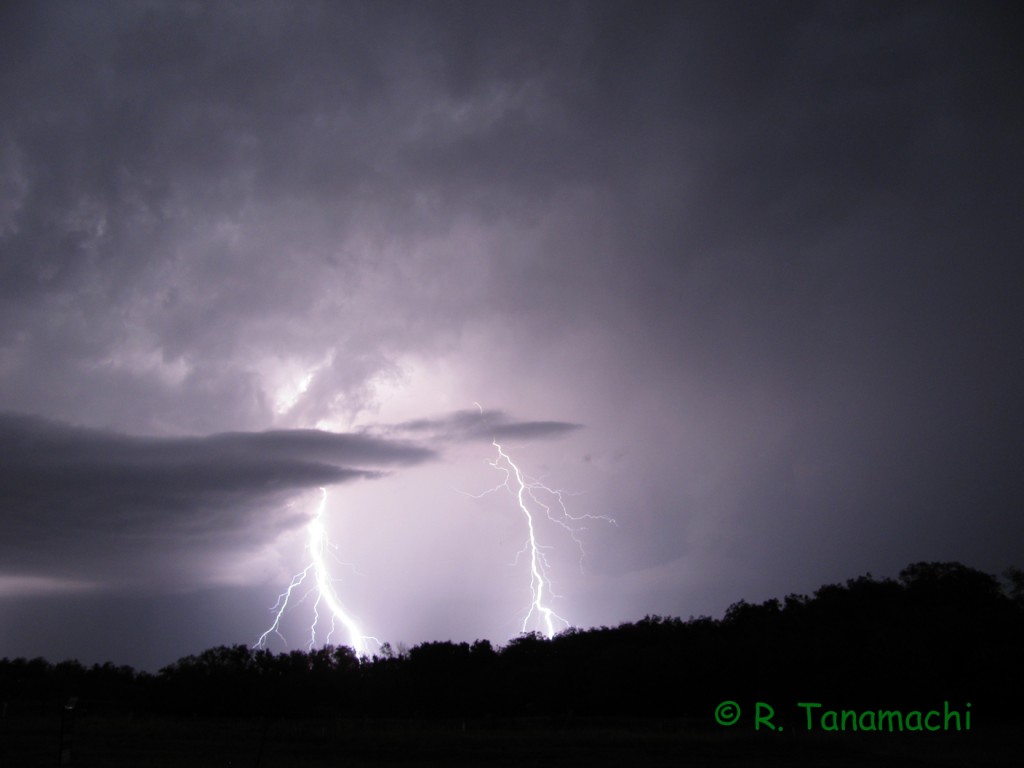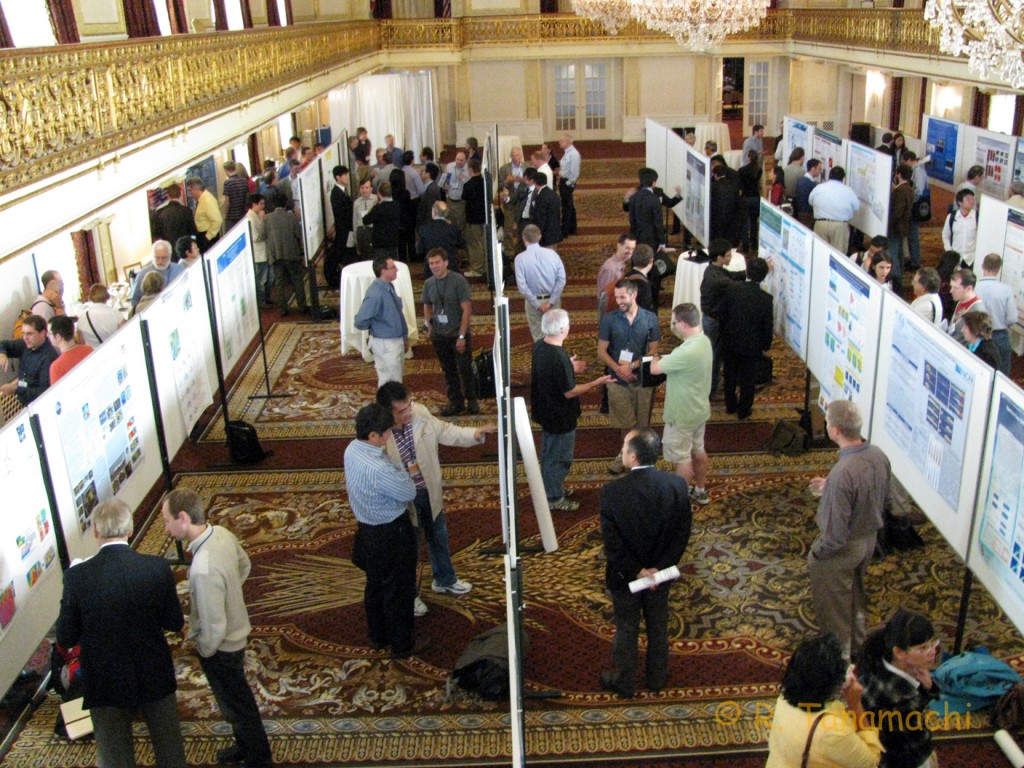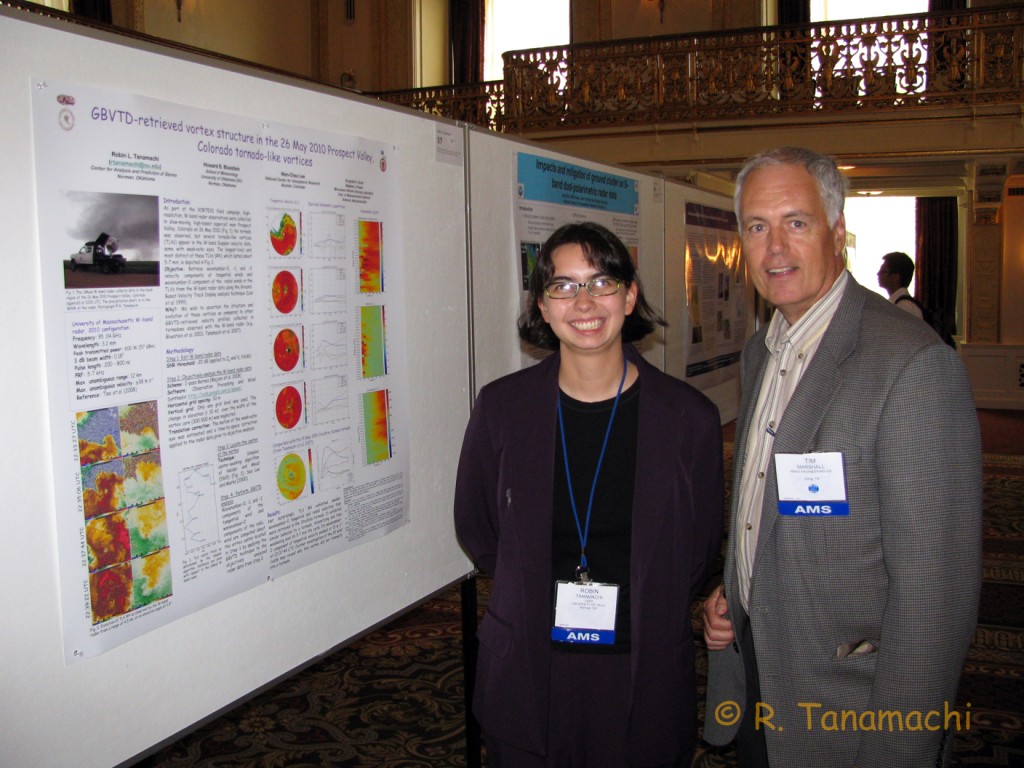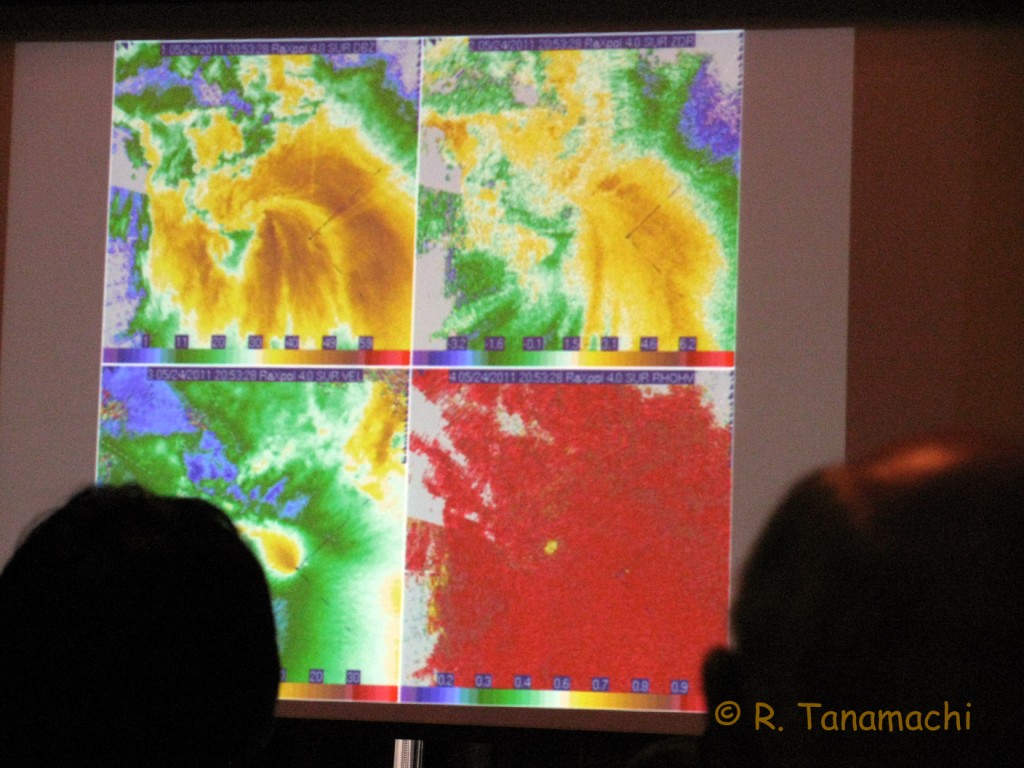Here’s a lightning shot from the storm that delayed he OU-Texas Tech football game on Saturday:

This same round of storms had intermittent embedded supercells. One developing BWER appeared to pass right over our house. Farther northeast, a tornado was reported near Boley, OK. That tornado appeared to come out of a left-moving supercell. We were out of position to chase that one as it raced away toward the northeast along I-44.
Monthly Archives: October 2011
Steel City Radar Conference
I recently attended the 35th AMS Radar Meteorology Conference in Pittsburgh, Pennsylvania. This biennial conference gathers meteorologists and engineers to talk about recent advances in weather radar.

A key word at this conference was calibration. Dr. V. Chandrasekar (author of a primary textbook, Polarimetric Doppler Weather Radar) gave a passionate key note talk lamenting the lack of field-wide standards for calibration of polarimetric measurements. How do we know that what we’re measuring from hundreds of kilometers away is accurate?
I gave one oral and one poster presentation about my current work, and chaired a session of six talks on VORTEX2 results. While oral presentations get recorded, I actually prefer poster sessions because I get to interact one-on-one with other conference attendees and potentially find new collaborators. Of course, I love chatting with friends, as well!

We also got glimpses of the future, mostly in the form of prototypes and test data from new platforms. There were numerous talks about dual-pol, about phased array, and about dual-pol phased array. Several different groups are trying to tackle design issues inherent to a dual-pol phased array radar, including my engineer colleagues at UMass. My V2 engineer, Krzysztof Orzel, is part of one of these teams. His talk about their development of a mobile, dual-pol phased array system won him the Geotis Prize for the best oral presentation by a student. So, how soon can I put this new radar in front of a tornado? Krzysztof’s keeping mum on that point for now!
This conference also saw the “debut” of RaXPol data collected in the 24 May 2011 El Reno-Piedmont-Guthrie tornado. Dr. Andy Pazmany had the honor of presenting the banner data set from his “baby.”

If you look closely at the lower-right panel, you’ll see a “hole” in the ρhv field, indicating non-meteorological scatterers (debris) inside the tornado.
After shaking hands, sharing food, and pushing elevator buttons with dozens of my colleagues, some of whom flew here from Europe and Japan, it was no great surprise that I flew home with the first symptoms of a cold. To paraphrase one of my colleagues, Dr. Pam Heinselman, scientific conferences are great for the exchange of ideas, but also for the exchange of germs!